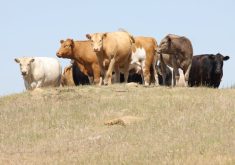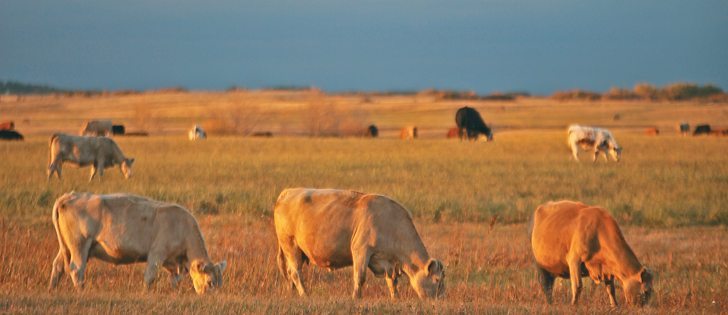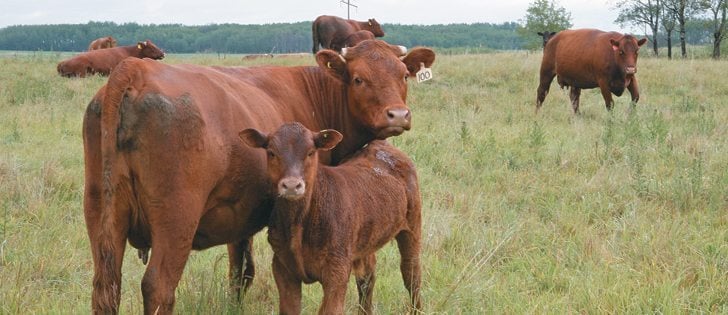Economy also an issue Unemployment in the U.S. is still high and consumers may choose less expensive pork or poultry
TAMPA, Fla. — The next 24 months are likely to be one of the most difficult periods in the history of the beef business.
“We may have record prices, but it is going to be difficult to make any money because we have record high break-evens across all the industry segments,” said market analyst Randy Blach.
The annual Cattlefax outlook at the National Cattlemen’s Beef Association convention foretold eye popping prices for the cow-calf sector and major losses for the feeding and processing sectors.
“There are some things going on that we are not sure we like,” said analyst Kevin Good during the convention, held in Tampa Feb. 5-9.
Read Also

Beef check-off collection system aligns across the country
A single and aligned check-off collection system based on where producers live makes the system equal said Chad Ross, Saskatchewan Cattle Association chair.
The industry faces continued drought across wide swaths of the United States. The underperforming economy also hurts.
Unemployment remains at more than eight percent and blue collar workers have less disposable income for high priced groceries.
Beef might be passed over at the grocery store in this economic climate because retail prices have increased 24 percent since 2007 and could increase again in 2013.
Pork is up 21 percent for the same period and chicken is up 14 percent.
“Maybe the consumer is holding onto his wallet a little bit tighter than we would like to see,” Good said.
High calf prices are normally an incentive to expand, but that is not happening because of high costs. Corn and gasoline prices have increased 300 percent since 2005.
That is good news for corn growers, who are expected to plant 98 million acres this year, about a million more than last year.
The success of the crop is weather dependent. If the drought continues, spot corn prices between now and June could reach $7.68-$7.75 per bushel and settle around $6.85 to $7 per bu.
However, prices could fall to $4 per bu. in the new crop year if moisture returns.
Expensive corn is bad news for a stressed feeding sector that is already dealing with 25 to 30 percent more bunk space than necessary.
There is also too much space in processing facilities. Processors have 12 percent excess packing capacity for finished beef and 23 percent excess space in cow plants.
Blach said Cargill closed a plant in Texas earlier this year because of the lack of cattle and elusive profits.
“You need to be prepared that we will see more plants that will be forced to close in the next couple years,” he said.
These plants handled 30 million fed animals in 2000, but that has fallen to 25 million head in the last few years because not enough cattle are available.
Calves start losing money on the finishing side from the day they are purchased and placed on feed.
Losses were $145 head in 2008, assuming no risk management was used, and $100 per head in 2012. Some profits were achieved in 2009 and 2010.
“The people downstream from your product have to make money or eventually they will have to say uncle,” said Blach.
“If we don’t start to see the feeding industry get more profitable by the second half of the year, we may be disappointed in where these feeder cattle prices actually are. You’ve got to have some profitability in the system that has been pretty scarce for the last several months.”
Increased exports may create some outlets for stressed beef producers.
Global meat per capita consumption in 1990 was 58 pounds and rose to 75 lb. in 2012.
The growth creates trade opportunities. The U.S. is the top meat exporter with a market share of 27 percent, and last year it exported 16 billion lb. of pork, poultry and beef.
Brazil is next at 22 percent, the European Union is 15 percent and Canada has seven percent.
The value of beef and byproduct exports contribute $277 per head to the value of every fed steer and heifer sold.
“It is a big deal and it is going to continue to grow,” Blach said.
“Having access to these export markets is key to the long-term growth of our industry.”
He said 30 percent of U.S. pork and poultry will be exported within 10 years and about 20 percent of beef production will be sold offshore.


















